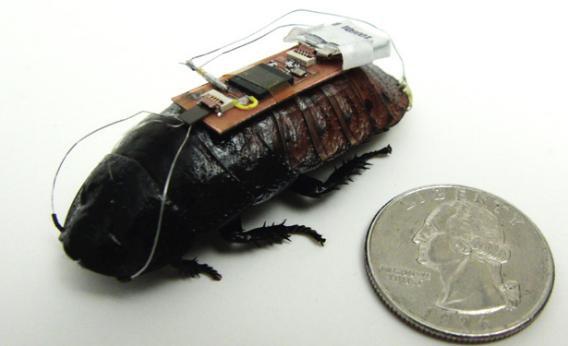Building robots is hard. Making them tiny, maneuverable, durable, and smart enough to find their way around in an unmapped environment—for instance, to find survivors trapped in a building after an earthquake—is harder still. So a team of scientists at North Carolina State has turned to the obvious alternative: remote-controlled bionic cockroaches.
By outfitting Madagascar hissing cockroaches with wireless electronic backpacks and hooking electrodes to their antennae and cerci, the researchers found they could steer the bugs this way and that. A zap to the cerci works like the throttle, tricking the creatures into thinking something’s sneaking up from behind. Zaps to the left and right antennae, which the cockroaches interpret as a sign that they’ve hit a barrier, act as a steering mechanism. With a little practice, the researchers were able to guide the roaches along a predefined path.
Depending on your predisposition toward cockroaches, you might find this either icky or cruel. For what it’s worth, North Carolina State electrical engineer Alper Bozkurt assures NBC that “insects do not have the concept of pain.” No comment from the cockroaches.
In any case, it seems unlikely that we’ll be hailing these bionic bugs as heroes anytime soon. While everything proceeds pretty smoothly in the video above—more so than in some early robo-cockroach experiments—the researchers’ paper itself suggests that they still have some kinks to work out. Their success rate for steering a bug all the way through an S-shaped lap was only about 10 percent. It seems the weight of the backpack inhibited their response to the stimuli. Getting the system to work when there’s no direct line of sight between the transmitter and the receiver could also prove a challenge.
